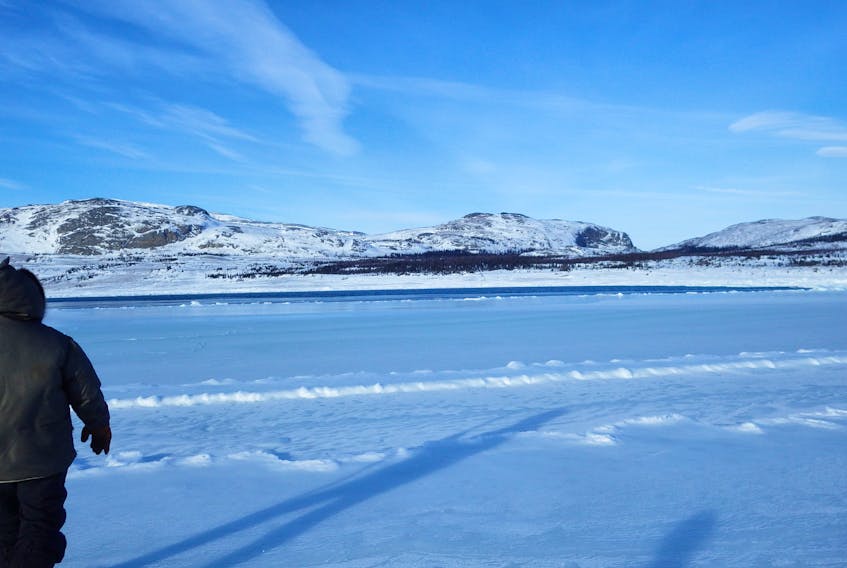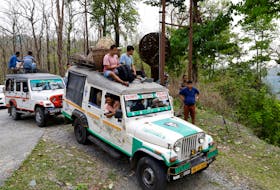A special buoy/sled technology built in a warm basement at Memorial University in St. John’s and taken to the Canadian North to help make travel on cold, wind-swept sea-ice safer, has gained international recognition.
The SmartICE project, headed by Dr. Trevor Bell of the Department of Geography, Faculty of Humanities and Social Sciences at MUN, has been named one of 19 recipients of the United Nations (UN) Momentum for Change Climate Solutions Award.
A news release notes the award shines light on some of the most innovative, scaleable and practical examples of what people across the globe are doing to combat climate change.
Bell, reached on Friday at the airport in Anchorage, Alaska, said SmartICE is a system that combines Inuit traditional ice knowledge with the latest technology in satellite tracking and ice-sensing equipment.
“We are the world’s first working climate change adaptation tool that sort of integrates on-ice technology, remote sensing, and most importantly Inuit knowledge to generate near real climate information on sea ice conditions,” Bell said.
“Across the Arctic sea ice is affecting people’s lives and communities, and so this a really practical working tool that responds to change in climate by allowing people to travel safer on ice that is becoming unpredictable, it’s becoming more dangerous.
“It was developed first in Nunatsiavut communities in northern Labrador. What we are doing is trying to expand that across communities in the Canadian North and hopefully beyond even, in time, to Alaska and Greenland.”
SmartICE (Sea-ice Monitoring And Real-Time Information for Coastal Environments) was developed by a university-government-industry partnership.
It involves a network of stationary and mobile sensors that measure sea-ice thickness. Ice hazard maps are generated from satellite imagery that help Inuit make decisions for safer sea-ice travel routes.
The project, which began in 2013, was established in two pilot communities that expanded to five this year. In 2016 it shared the Arctic Inspiration Prize.
Patricia Espinosa, executive secretary for UN Climate Change, stated in a news release that the award recipients demonstrate an unprecedented amount of climate change action happening around the world.
“Their passion, creativity and positive impacts on the ground are extraordinary,” Espinosa said. “Real-world examples of how the implementation of the Paris Agreement and the wider sustainable development goals is happening at all scales across all countries and across all sectors of society.”
Bell noted that thinner, unpredictable sea ice is making it more difficult for Inuit to hunt, fish and travel safely. It can have a negative effect on the local economy, culture and identity.
“There’s a whole range of businesses that rely on people travelling safely on that coastal ice,” Bell noted. “If you think of tourism, lots of tourism companies bringing people along the ice out to the floe edge to see the animals and the environment in the spring time, and that requires safe travel on the ice. And it’s an industry that can’t afford to have any kind of incident, otherwise the confidence in that industry is lost.
“The same with community fisheries. Fishers go out across the ice using hand lines to catch turbot through the ice in the winter time, but they leave large amounts of quota in the water because of unpredictable ice conditions. So we are looking to work with those industries to help fishermen access that quota.”
Bell said they are now trying to transform from a community research partnership to a social enterprise/business model to offer the service to many communities. It transfers technology to the community — particularly getting youth involved — and hires local people, including the setting up of an operational hub in the north.
“We want to expand into new communities and are trying to raise the funding to allow that to happen,” he said. “Ultimately, what we are trying to do is working at how to make this social enterprise sustainable over the long term. The impacts of climate change aren’t going to go away, so communities are going to need this service in the future. So, to introduce it on some pilot funding and then to take it away, is not very helpful to these communities.”









